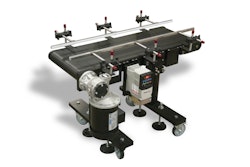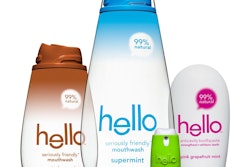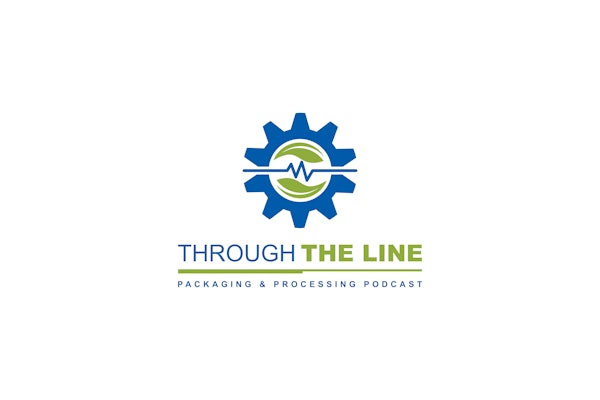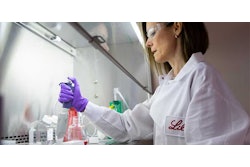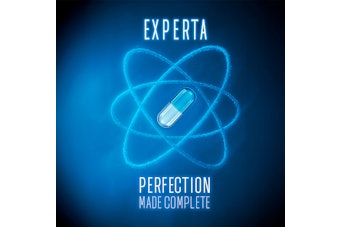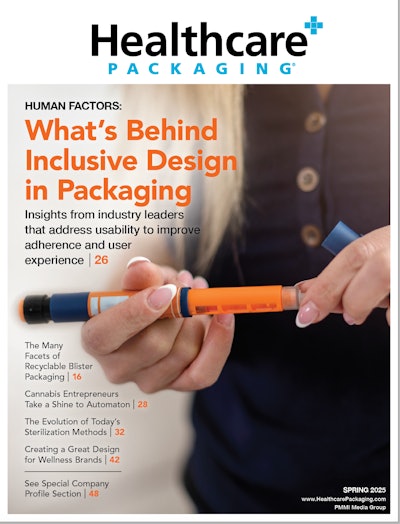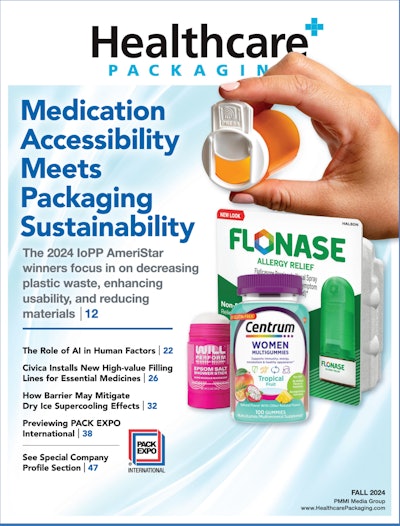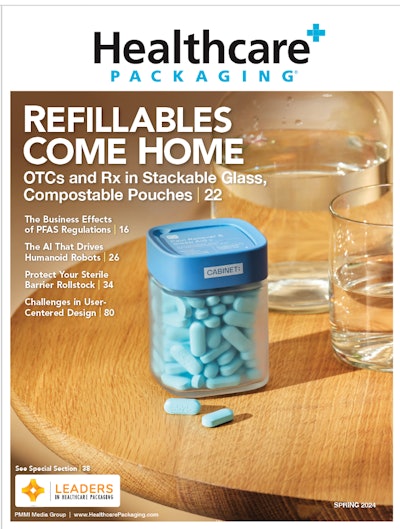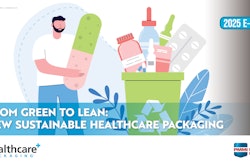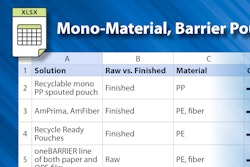In theory, there are (at least) three possible ways of handling aggregation.
The first method is by using non-line-of-sight RFID tags as the data carrier at the item level. Each drug package would have a unique RFID tag attached to it. The existing case-packing operation would require very few if any changes.
After the cases are sealed and an RFID tag containing the case-level serial number is attached, the case would be run through an RFID reader where all of the unit-level serial numbers and the case-level serial number would be read at once. The serialization solution would electronically bind those numbers to one another to form the aggregation information for that case.
Since the cases are already sealed, there is no chance of discrepancies such as a mix-up of contents between two cases. If the RFID reader doesn’t pick up all of the expected serial numbers, the case would be rejected for quality inspection and rework.
The reason this works is that RFID doesn’t require a “line-of-sight” to read. That is, the RFID reader can read directly through the corrugated case material and pick up all of the tags in a very short time.
The benefit is that this operation would produce 100% reliable aggregation, and so inference could be relied upon as a downstream strategy.
In the past, biologics manufacturers expressed concerns that the energy from RFID might damage the proteins in their products. Because RFID offers advantages with cold chain products, which are often biologics, and because they can be used to track when goods move in and out of temperature-controlled areas, some biologic manufacturers have performed studies to test the impact of RFID on their goods. Reports were published in mid-2012 on tests that indicated RFID does not harm biologics.
However, few if any companies are likely to put their unit package-level serial numbers into RFID tags unless a given country or region specifically requires it (which is always a possibility). The reality is that the vast majority of drugs will be serialized using 2D DataMatrix barcodes. Barcodes, while much cheaper than RFID tags, require “line-of-sight” to work.
Which brings us to method number two, which is pre-aggregation inspection. Essentially, a vision system would be placed at the entry to the case packer (or bundler or cartoner). The serialization system would keep track of individual package serial numbers as they file into the case packer. So for example, for a 12-count case or bundle, it will count the next 12 bottles that stream by the vision system and associate those numbers with the case-level serial number for the case that’s being loaded.
The benefit of this type of inspection is that it requires minimal modifications to the packaging line, which lowers costs and reduces the validation burden.
The drawback, however, is that it’s prone to unreliability. If a bottle is removed or falls off the line after that vision inspection occurs, the sequence of bottles will get out of sync by one. That means incorrect aggregation information is attributed to not only that case, but also every case after it.
This risk can be reduced by maintaining the count of items and detecting when an item was removed after entering the case packer and another item is needed to complete the case. Camera inspection systems may be used to confirm a complete count, and control systems can eject cases with questionable aggregation.
Inaccurate aggregation in a case packer would be a disaster from a data integrity standpoint.
Which leads to the third, and likely most realistic, option for most pharmaceutical manufacturers: post-aggregation inspection.
The way to always generate 100% accurate aggregation information is to read the unit-level serial numbers only after the packages are bound together in a grouping—either a multipack or full-case grouping.
In this scenario, a vision system would essentially take a picture of all the packages in a case right before the flaps are closed. But for this to be possible, the 2D barcodes would need to be visible on the part of the package that is exposed when loaded into a case. In the case of individual unit cartons, it may mean relocating the 2D code to a side panel from an end flap, or vice versa. And changing the package graphics can result in further delays.
For a case that has multiple tiers of primary packages, this inspection would need to be performed each time a tier is loaded.
For plastic bottles, the 2D code on the label isn’t likely to be visible once the bottle is in the case. So what to do?
Temporary 2D code
Some vendors have come up with a workaround. It entails the use of a “temporary” 2D barcode that is ink-jet printed onto the bottom of all empty bottles. This barcode contains a unique bottle identification number, or bottle ID, that is unique for all of the bottles within the current batch of the drug being bottled. The purpose of this barcode is to keep track of each bottle as it progresses through the packaging line and into secondary packaging operations—shrink bundlers, cartoners, case packers, etc.
As bottles emerge from the labeler, a vision system would verify that the 2D DataMatrix code (along with lot and expiration date) is readable. A second vision system would read the temporary 2D bottle ID code.
The packaging line management system would then create a one-to-one relationship of the “real” serialized NDC number encoded in the DataMatrix barcode with the “temporary” 2D code printed on the bottom. (This is not aggregation—it’s a one-to-one relationship that’s used only during the packaging process.)
Once the bottles are shrink-bundled or grouped for loading into a case, a vision system would take a picture from the bottom—thus capturing all of the temporary 2D codes in one image.
Once the line system “knows” which bottles are in that aggregation (as determined by the temporary 2D codes), it can easily cross-reference each of those 2D codes with the “real” serialized NDC number, thus successfully building a bundle or case-level aggregation without actually having to scan the bottles’ labels. The result is 100% reliable aggregation.
Considering each of the techniques discussed above, a key aspect is to collect the item serial number as close to placing it in the case as possible.
One often-overlooked aspect is to ensure the grade of the barcode is maintained during packaging. A vision system may read a DataMatrix code just fine, but a barcode scanning system may not, depending on the grade of the code. This discrepancy could potentially render goods unusable in the supply chain. Many companies are adding barcode grading and in-line continuous grading to their QA inspection during packaging.
Manual case packing
Manual case-packing operations are somewhat more cut-and-dried in terms of the complexity (or lack thereof), since individual packages can be manually scanned as they are placed into the case. The downside is that increases case-packing time. Extra labor may need to be added in order to prevent line output from being affected.
Many manual case-packing operations use a system, sometimes referred to as a rewinder, to print and spool serialized labels, or preprint cartons, with serial number, lot, expiration, and 2D DataMatrix.
Manual case packing does not preclude the use of a fixed “supermarket”-style scanner to capture an entire tier of product, though that is subject to the same constraints as described previously. When it comes to aggregating during a manual case-packing operation, the more you can structure your workflow and line operation to be less dependent on the operator for a successful aggregation, the better off you’ll be.
Regardless of the method you choose to aggregate, remember that the most reliable way of assuring that aggregation data is accurate is by capturing the aggregation at each level only after the packages are already grouped together.
Finally, an investment in improved material handling can go a long way in limiting rework required from aggregation and serialization errors.
Liked this article? Download the entire playbook here.




